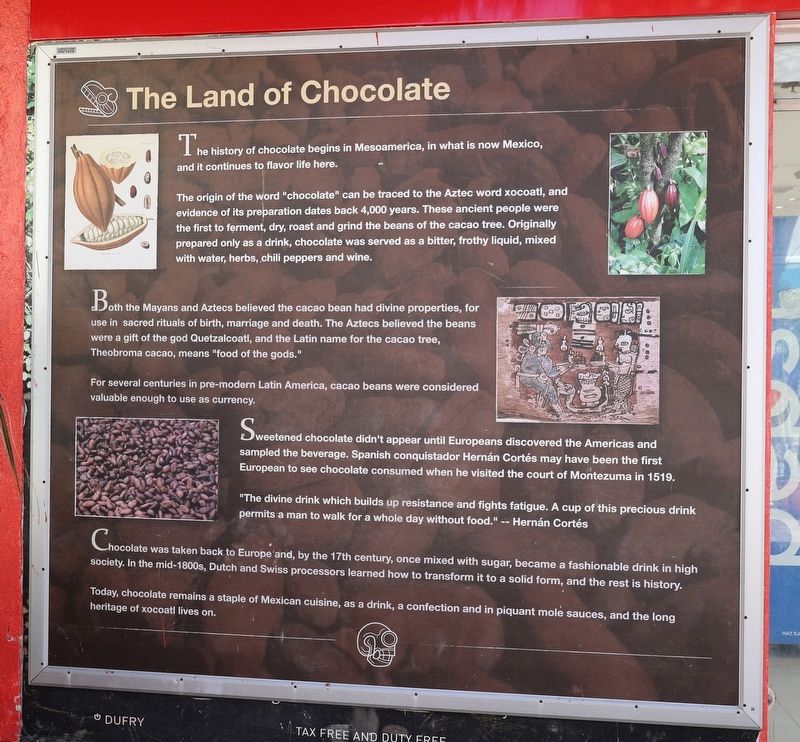Zona Centro in Cozumel, Quintana Roo, Mexico — The Yucatan Peninsula (The Southeast)
Land of Chocolate
The history of chocolate begins in Mesoamerica, in what is now Mexico and it continues to favor life here.
The origin of the word "Chocolate" can be traced to the Aztec word xocoatl, and evidence of its preparation dates back 4,000 years. These ancient people were the first to ferment, dry, roast, and grind the beans of the cacao tree. Originally prepared only as a drink, chocolate was served as a bitter, frothy liquid, mixed with water, herbs, chili peppers, and wine.
Both the Mayans and Aztecs believed the cacao bean had divine properties, for use in sacred rituals of birth, marriage, and death. The Aztecs believed the bens were a gift of the god Quetzalcoatl, and the Latin name for the cacao tree, Theobroma cacao, means "food of the gods."
For several centuries in pre-modern Latin America, cacao beans were considered valuable enough to use as currency.
Sweetened chocolate didn't appear until Europeans discovered the Americas and sampled the beverage. Spanish conquistador Hernan Cortes may have been the first European to see chocolate consumed when he visited the court of Montezuma in 1519.
"The divine drink which builds up resistance and fights fatigue. A cup of this precious drink permits a man to walk for a whole day without food." - Hernan Cortez
Chocolate was taken back to Europe and by the 17th century, once mixed with sugar, became a fashionable drink in high society. In the mid-1800s, Dutch and Swiss processors learned how to transform it into a solid form and the rest is history.
Today, chocolate remains a staple of Mexican cuisine, as a drink, a confection, and in piquant mole sauces, and the long heritage of xocoatl lives on.
Topics. This historical marker is listed in these topic lists: Anthropology & Archaeology • Churches & Religion • Native Americans. A significant historical year for this entry is 1519.
Location. 20° 28.57′ N, 86° 58.482′ W. Marker is in Cozumel, Quintana Roo. It is in Zona Centro. The marker is located within Cozumel's port area. Touch for map. Marker is in this post office area: Cozumel QR 77600, Mexico. Touch for directions.
Other nearby markers. At least 8 other markers are within walking distance of this marker. Los Sacerdotes Mayas / The Mayan Priests (a few steps from this marker); Calendario maya / Mayan calendar (a few steps from this marker); Chac mool (within shouting distance of this marker); Diosa Ixchel / Goddess Ixchel (within shouting distance of this marker); Coral Reefs (within shouting distance of this marker); Ancient Heritage (within shouting distance of this marker); Chac-Mool (about 150 meters away, measured in a direct line); Tzolkin (approx. 0.3 kilometers away).
Credits. This page was last revised on February 17, 2024. It was originally submitted on February 12, 2024, by Sandra Hughes Tidwell of Killen, Alabama, USA. This page has been viewed 39 times since then. Photo 1. submitted on February 12, 2024, by Sandra Hughes Tidwell of Killen, Alabama, USA. • J. Makali Bruton was the editor who published this page.
Editor’s want-list for this marker. A wide view photo of the marker and the surrounding area together in context. • Can you help?
